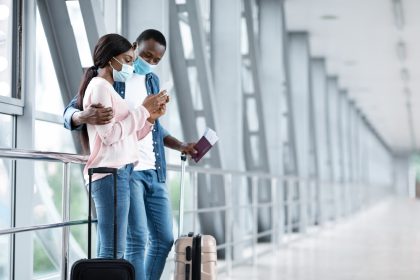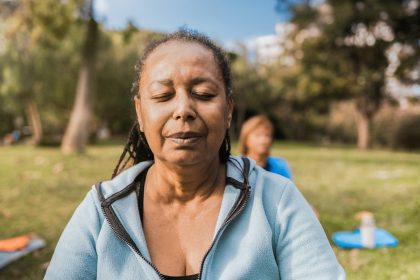The freedom to explore new destinations shouldn’t diminish with age or health conditions. For seniors living with chronic health challenges, travel remains not only possible but potentially beneficial for mental and physical wellbeing. Proper preparation, however, becomes even more crucial when managing conditions like arthritis, diabetes, heart disease, or respiratory issues while away from home.
Travel can provide seniors with opportunities for enriching experiences, family connections, and the joy of discovery – all vital components for maintaining quality of life. The key lies in thoughtful planning that addresses health needs while maximizing enjoyment. With advances in accessibility services and medical support options, seniors with chronic conditions have more resources than ever to support their travel dreams.
Timing travel for optimal health
The first consideration for seniors with chronic conditions involves strategic timing. Season selection significantly impacts comfort and health management during travel. For those with respiratory conditions like COPD or asthma, avoiding regions during high pollution seasons or peak allergy periods makes a substantial difference in comfort levels.
Climate considerations extend beyond allergies – arthritis symptoms often worsen in cold, damp environments, while heart conditions may be aggravated by extreme heat. Researching average temperatures and humidity levels for potential destinations during specific travel months helps identify the optimal window for particular health needs.
Beyond environmental factors, scheduling travel around medication regimens and treatment schedules proves equally important. Many seniors receive regular treatments, therapies, or need refills at specific intervals. Planning trips between critical medical appointments or arranging for temporary care at the destination ensures continuity of care without disruption.
Avoiding peak tourist seasons offers additional benefits beyond smaller crowds – reduced stress from navigating busy attractions, shorter wait times, and often more personalized service at accommodations. The shoulder season (just before or after peak travel periods) frequently provides the ideal balance of good weather, fewer tourists, and lower prices.
Destination selection strategies
The second key element focuses on choosing destinations that accommodate health needs. Some locations naturally align better with specific chronic conditions based on climate, medical infrastructure, and accessibility features.
Cities with advanced medical facilities provide reassurance for travelers with complex conditions. Researching the quality and proximity of healthcare providers, particularly specialists relevant to specific conditions, should factor into destination decisions. International destinations vary widely in healthcare standards and access, making some locations significantly more suitable than others.
Altitude represents an often-overlooked factor when selecting destinations. High-elevation locations can exacerbate breathing difficulties and cardiovascular conditions. Places like Denver, Mexico City, or mountain destinations may require gradual acclimation periods or might be better avoided depending on specific health situations.
Prioritizing destinations with strong accessibility infrastructure makes a tremendous difference in travel enjoyment. Countries and cities with robust accessibility laws generally offer better accommodations for mobility challenges. Scandinavian countries, Australia, and Canada frequently rank highly for accessible public transportation, attractions, and accommodation options.
Comprehensive insurance and documentation preparation
The third critical strategy involves securing appropriate travel insurance and organizing essential documentation. Standard travel insurance policies often exclude pre-existing conditions, making specialized senior travel insurance with chronic condition coverage absolutely essential.
Travel medical insurance should include emergency medical evacuation coverage, particularly for international destinations where healthcare standards may vary. Reading the fine print becomes crucial – some policies cover exacerbations of stable chronic conditions while excluding others, and coverage limits differ significantly between providers.
Beyond insurance, organizing a comprehensive health dossier simplifies emergency situations. This documentation should include a current medication list with generic names (important when abroad), dosage information, treatment schedules, physician contact details, and recent test results or medical reports. Storing digital copies securely online provides backup access if physical documents become lost.
Medical alert jewelry or digital options provide another layer of security. Modern medical ID bracelets can include QR codes linking to more detailed health information, particularly valuable when language barriers exist.
Medication management systems
The fourth element of successful travel involves creating foolproof medication management systems. Medication organization transcends simply packing pills – it requires strategic planning to account for time zone changes, travel delays, and secure storage.
Time zone adjustments can significantly impact medication schedules. For medications requiring precise timing, consulting with healthcare providers about gradually shifting administration times before departure helps maintain therapeutic levels during travel. Specialized apps designed for travelers with chronic conditions can automatically adjust medication reminders to new time zones.
Packing strategies should include redundancy – carrying medications in both carry-on and checked luggage provides backup if either becomes lost or delayed. Using pill organizers with secure closures prevents spills, while keeping original prescription bottles or documentation helps address questions from customs officials or emergency healthcare providers.
Temperature-sensitive medications require additional consideration. Insulin and certain other medications need protection from extreme temperatures. Specialized travel cases with temperature control features offer solutions for medications requiring refrigeration or protection from heat.
Accommodation selection with health priorities
The fifth strategy focuses on thoughtful accommodation selection aligned with health needs. Room location within properties significantly impacts accessibility and comfort. Requesting rooms near elevators reduces walking distances, while ground floor accommodations eliminate dependency on elevators entirely – particularly important in regions prone to power outages or in smaller properties without reliable elevator service.
Bathroom safety features vary dramatically between properties and regions. Requesting rooms with grab bars, shower seats, or roll-in showers when needed helps prevent common travel injuries. Some hotel chains now offer specifically designed accessible rooms with broader doorways, lower countertops, and enhanced safety features.
Kitchen access provides numerous benefits for travelers with dietary restrictions or medication schedules requiring food. Extended-stay properties, apartment rentals, or hotels with kitchenettes allow preparation of condition-appropriate meals and proper food storage for medications requiring refrigeration.
Bedding quality significantly impacts travelers with pain conditions. Properties offering mattress options, additional pillows, or specialty bedding can make a substantial difference in sleep quality. Some hotels now provide pillow menus with varied firmness options or hypoallergenic bedding upon request.
Daily itinerary construction techniques
The sixth element involves building daily schedules that accommodate energy fluctuations and health needs. The pacing of activities represents the foundation of comfortable travel with chronic conditions. Alternating active and restful days prevents exhaustion, while scheduling demanding activities during personal peak energy periods maximizes enjoyment.
Morning activities often work best for many seniors, particularly those with conditions causing afternoon fatigue or pain that builds throughout the day. Scheduling priority attractions or experiences earlier provides energy reserves for full enjoyment.
Rest integration requires intentionality rather than happening by chance. Building specific downtime into itineraries – whether for afternoon naps, medication administration, or simply recharging – prevents exhaustion and related health complications. Some travelers find the European tradition of afternoon breaks perfectly aligned with their energy management needs.
Meal timing coordination with medication schedules requires advance planning. Researching restaurant operating hours at destinations prevents situations where medications requiring food cannot be properly taken due to closed restaurants or limited options.
Transportation adaptations for comfort
The seventh strategy addresses transportation modifications that enhance travel comfort. Flight selection significantly impacts the travel experience. Direct flights eliminate the stress of connections and reduce total travel time, while overnight flights may allow better sleep for some travelers. Requesting bulkhead or aisle seats provides easier movement access during long flights.
Private transportation options at destinations offer flexibility unavailable with public transit. While potentially more expensive, private drivers, rental cars, or ride-sharing services allow prompt returns to accommodations when fatigue or symptoms arise unexpectedly.
Cruise travel provides unique advantages for many seniors with chronic conditions. The combination of stable accommodations with changing destinations eliminates repeated packing and unpacking. Medical facilities onboard larger ships offer security for travelers with stable but complex conditions, while accessible cabin options accommodate mobility challenges.
Train travel presents another senior-friendly option, particularly in regions with developed rail systems. The ability to move around during journeys, more spacious seating, and scenic routes without driving stress makes rail an excellent alternative to flying for many seniors with chronic conditions.


















